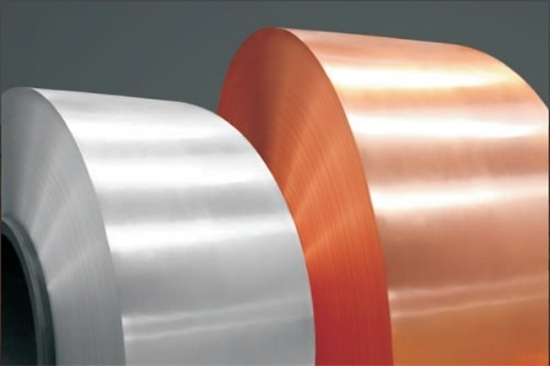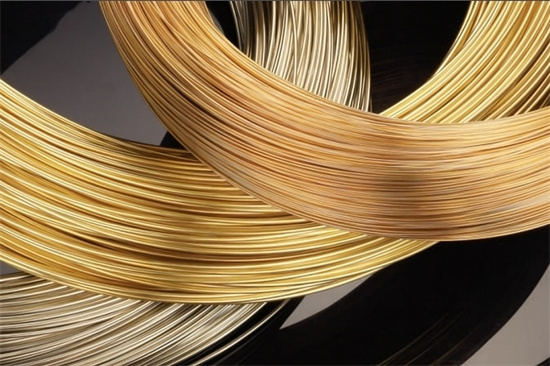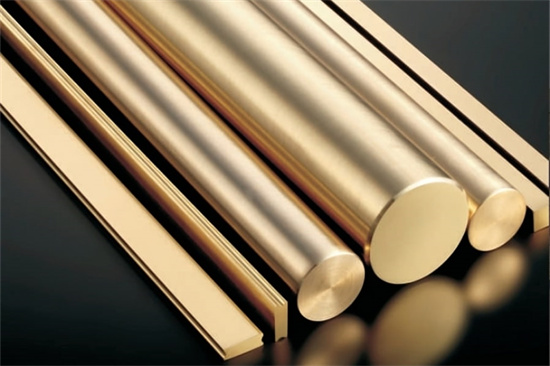


CuSn6:最高の耐久性と強度を実現する合金
低いMOQ
さまざまなニーズに対応するため、最低注文数量を少なくしています。
OEM & ODM
顧客独自のニーズに応えるため、カスタマイズされた製品とデザインサービスを提供する。
十分な在庫
迅速な注文処理と、信頼できる効率的なサービスの提供。
顧客満足度
顧客満足を核とした高品質の製品を提供する。
この記事を共有する
目次
もしあなたが銅合金の世界を探求しているのであれば、次のようなものに出会ったことがあるかもしれない。 CuSn6としても知られている。 リン青銅.を主成分とする合金である。 銅 そして すずでよく知られている。 強さ, 耐食性そして 優れた疲労特性.あなたが働いているかどうかにかかわらず 海洋工学, 電気アプリケーションあるいは 精密機器, CuSn6 は、幅広い用途に理想的な特性を独自にブレンドしている。
この詳細なガイドでは、以下について知っておく必要があるすべてのことを掘り下げます。 CuSn6からのものである。 構成 そして 機械的性質 その アプリケーション, 仕様書そして 価格設定.もしあなたがエンジニア、材料科学者、あるいは単にこの多用途合金の内部と外部を理解したい人なら、あなたは正しい場所にいる!
概要
CuSn6 は 銅錫合金 約6%の錫を使用し、以下の組み合わせを提供する。 強さ, 優れた耐食性そして 耐摩耗性の向上.そのため、最も人気のあるタイプのひとつとなっている。 リン青銅 に耐える素材を必要とする産業向け。 高負荷, 疲労そして 摩擦.
が加わった。 リン 合金化プロセス中の キャスタビリティ そして 加工性そのため、製造には理想的である。 精密部品スプリング、電気コネクター。
主な特徴:
- 高強度:他の銅錫合金に比べ、優れた強度で知られる。
- 優れた耐疲労性:繰り返し荷重がかかる用途に最適。
- 耐食性:でのパフォーマンス マリン そして 産業環境.
- 良好な耐摩耗性:摩擦の大きい部品に適している。
- 電気伝導率:中程度。 電気 そして エレクトロニクス 産業である。
組成と特性
を分解してみよう。 構成 の CuSn6 この合金を素材の世界で際立たせている特性を詳しく見てみよう。
化学組成
の構成 CuSn6 は、望ましい機械的・物理的特性が得られるよう慎重に管理されている。主な要素は以下の通り。 銅 そして 錫微量の リン 特定の特性を強化するために加えられた。
| エレメント | パーセント(%) |
|---|---|
| 銅(Cu) | 92.0 – 94.0 |
| 錫(Sn) | 5.0 – 7.0 |
| リン (P) | 0.1 – 0.4 |
- 銅(Cu):ベースとなる素材に良好な 延性 そして 熱伝導率.
- 錫(Sn):増加 強さ, 腐食 抵抗そして 耐摩耗性.
- リン (P):強化 加工性 そして 耐疲労性.
機械的および物理的特性
の機械的および物理的特性 CuSn6 は、さまざまな用途に使用できる汎用性の高い素材である。以下に主な特性の概要を示す:
| プロパティ | 代表値 |
|---|---|
| 引張強度 | 400 - 600 MPa |
| 降伏強度 | 250 - 350 MPa |
| 伸び | 15 – 25% |
| 硬度 | 90 - 150 HV |
| 密度 | 8.85 g/cm³ |
| 熱伝導率 | 50 - 60 W/mK |
| 電気伝導率 | 10 - 15% iacs |
| 耐疲労性 | 素晴らしい |
| 耐食性 | 高い |
なぜこれらの特性が重要なのか
これらの特性により CuSn6 以下のような用途に最適です。 強さ, 耐久性そして 耐食性 が重要である。例えば 高張力 に耐えられることを保証する。 機械的応力 変形することなく 優れた耐疲労性 そのため、スプリングや電気コネクターなど、繰り返し荷重がかかる部品に最適です。
アプリケーションどこで、どのように使われているか
そのユニークな特性の組み合わせのおかげだ、 CuSn6 は様々な産業で使用されています。いくつかの一般的な用途と、この合金がそれぞれでどのような性能を発揮するのかを探ってみましょう。
一般的なアプリケーション
| 産業 | アプリケーション |
|---|---|
| マリン | ベアリング、ブッシング、プロペラシャフト、ファスナー |
| 電気 | コネクター、スプリング、スイッチ部品 |
| 自動車 | バルブガイド、ギア、スプリング |
| 航空宇宙 | 精密部品、ファスナー |
| 楽器 | 弦楽器、リード楽器 |
| インダストリアル・エンジニアリング | ギア、ベアリングケージ、ウェアプレート |
CuSn6がこれらの用途に適合する理由
- マリン: CuSn6 は、その特性から海洋環境に優れている。 耐食性 そして 耐摩耗性.でよく使われる。 ベアリング, ブッシングそして プロペラシャフト 耐えられる場所 塩水 露出と高負荷。
- 電気:合金の 適度な電気伝導性 そして 良好な耐疲労性 には理想的である。 電気コネクタ そして スプリングス で スイッチ.
- 自動車:自動車業界では CuSn6 に使用される。 バルブガイド, 歯車そして スプリングス そのため 強さ そして 耐摩耗性.
- 航空宇宙:精密部品 航空宇宙工学 頼る CuSn6 その 強さ そして 耐食性.
- 楽器:合金の 音響特性 そして 耐摩耗性 のお気に入りである。 ストリングス そして リード楽器.
仕様、サイズ、グレード
選択時 CuSn6 あなたのプロジェクトで利用可能な 仕様書, サイズそして 成績.以下に、この合金で利用可能なオプションの詳細な概要を示す。
仕様とサイズ
| 仕様 | 詳細 |
|---|---|
| 形状 | シート、ストリップ、ロッド、ワイヤー、バー |
| 厚さ範囲(シート) | 0.2 mm~20 mm |
| 直径範囲(ロッド) | 1 mm~150 mm |
| テンパー | 焼きなまし、冷間加工、硬質 |
| 規格 | アストムB103、ディン17662、エン1652 |
グレード
| グレード | 主な特徴 |
|---|---|
| CuSn6-ソフト(アニール処理) | 延性が高く、深絞りや成形に適している。 |
| CuSn6-硬質(冷間加工) | 強度が向上し、耐摩耗用途に使用 |
| CuSn6-エクストラハード | 高負荷で摩耗の激しい用途に理想的な最大強度 |
仕様が重要な理由
正しい選択 フォーム そして グレード は、素材がお客様の特定のニーズを満たすようにするために非常に重要です。例えば ソフト、アニール CuSn6は深絞り部品の成形に理想的である。 難易度 を必要とする部品に適している。 高強度 そして 耐摩耗性.
サプライヤーと価格
購入に関しては CuSn6適切なサプライヤーを見つけることは、品質とタイムリーな納品を確保するための鍵です。以下に、以下の主要サプライヤーのリストと推定価格を示します。 CuSn6.
サプライヤーと価格詳細
| サプライヤー | 所在地 | 価格帯(kgあたり) | 納期 |
|---|---|---|---|
| リン青銅株式会社 | アメリカ | $12 – $20 | 2~3週間 |
| ユーロアロイ社 | ヨーロッパ | €10 – €18 | 1~2週間 |
| アジアメット社 | 中国 | $10 – $17 | 3~4週間 |
| グローバルメタルズ社 | インド | $9 – $16 | 2~4週間 |
| マリンアロイ英国 | 英国 | £11 – £18 | 1~2週間 |
CuSn6の価格決定要因
- 形状:圧延されたシートやストリップは、追加の加工が必要なため、一般的にワイヤーやロッドよりも高価である。
- グレード:のような高強度グレード コールドワーク または 超硬 CuSn6は高価になる傾向がある。
- 数量:大量購入は通常、単価が安くなる。
利点と限界
どんな素材でもそうだ、 CuSn6 がある。 利点 そして 制限.これらを理解することで、この合金が特定の用途に適しているかどうかを判断することができます。
利点と限界
| メリット | 制限事項 |
|---|---|
| 優れた耐食性 | 純銅より低い電気伝導率 |
| 高い強度と耐摩耗性 | 真鍮や標準青銅より高価 |
| 良好な加工性 | 熱伝導率が低い |
| 優れた耐疲労性 | 特定の特性を得るためには精密な熱処理が必要 |
| 焼鈍状態での良好な加工性 | 審美的な用途には、追加の表面処理が必要な場合がある |
CuSn6はあなたのプロジェクトに最適ですか?
を持つ素材が必要な場合は、次のようになります。 高強度, 耐摩耗性そして 耐食性, CuSn6 が完璧な選択肢だろう。しかし、もしあなたのプロジェクトが 高導電性 または 熱性能のような代替案を検討する必要があるかもしれない。 純銅 または ブラス.
CuSn6と他の銅合金:比較
正しい合金を選ぶには、他の素材と比較することがよくあります。以下のような、よく使われる銅合金との比較を見てみましょう。 CuSn8, CuZn37(真鍮)そして CuNi10(銅-ニッケル).
CuSn6対CuSn8対真鍮対銅ニッケル
| プロパティ | CuSn6 | CuSn8 | 黄銅(CuZn37) | 銅-ニッケル (CuNi10) |
|---|---|---|---|---|
| 引張強度 | 400 - 600 MPa | 450 - 650 MPa | 300 - 450 MPa | 300 - 550 MPa |
| 降伏強度 | 250 - 350 MPa | 300 - 400 MPa | 100 - 250 MPa | 200 - 350 MPa |
| 耐食性 | 高い | 非常に高い | 中程度 | 優れている(特に海洋環境において) |
| 電気伝導率 | 10 - 15% iacs | 8 - 12% iacs | 28% IACS | 5 - 10% iacs |
| 耐摩耗性 | 高い | 非常に高い | 中程度 | 高い |
| コスト | 中程度 | 高い | 低い | 高い |
| アプリケーション | 船舶、電気、自動車 | 船舶用、ヘビーデューティーベアリング | 配管、装飾品 | 船舶、熱交換器、配管 |
比較から得られる主なもの
- それは のバランスを提供する。 強さ, 耐食性そして 耐摩耗性に最適である。 マリン そして 電気 アプリケーションを使用する。
- CuSn8 さらに より優れた耐摩耗性 しかし、その代償は大きい。
- 黄銅(CuZn37) は、より安価で、より優れた代替品である。 電気伝導度が欠けている。 耐摩耗性 そして 耐食性 の CuSn6.
- 銅-ニッケル (CuNi10) の方が優れている。 マリンアプリケーション特に 海水腐食 は、より高価ではあるが、重要な関心事である。
よくある質問(FAQ)
以下は、以下の質問に関するリストである。 CuSn6:
| 質問 | 答え |
|---|---|
| CuSn6は何に使われているのか? | それは で広く使用されている。 マリンハードウェア, 電装品, スプリングスそして 精密機器. |
| CuSn6の価格は? | の価格である。 CuSn6 の範囲にある。 1kgあたり$9~$20による。 フォーム, グレードそして 数量. |
| CuSn6は耐食性はありますか? | そうだ、 それ が優れている。 耐食性特に 海洋環境 そして 工業用雰囲気. |
| CuSn6は電気用途に使用できますか? | そう、それは中庸を提供する。 電気伝導度 でよく使われている。 コネクタ そして スイッチ部品. |
| CuSn6は加工しやすいですか? | そうだ、 それ で知られている。 良好な加工性に適している。 精密部品 そして 機械部品. |
| CuSn6とCuSn8の違いは何ですか? | CuSn8 8%)は、錫の含有量が高く(8%)、錫の含有量が低い(8%)。 強さ そして 耐摩耗性 と比べて CuSn6. |
結論
それは は汎用性と耐久性に優れている。 リン青銅合金 の理想的な組み合わせを提供する。 強さ, 耐食性そして 耐摩耗性.あなたが働いているかどうかにかかわらず マリンハードウェア, 電装品あるいは 精密機器この合金は、厳しい環境下で優れた性能を発揮する。
一方 それ 市場で最も安価な素材とは言えないかもしれないが、その価値は大きい。 長持ちする耐久性 そして 耐摩耗性と耐腐食性 それを コストパフォーマンスの高い選択 性能が重視される業界向けあなたのプロジェクトが 高強度, 耐疲労性そして 作業性, それ はこの仕事に最適な合金かもしれない。
最終的には それ の間で素晴らしいバランスを保っている。 フォーム そして 機能幅広い用途に対応する確かな選択肢である。
最新価格
Met3DPについて
製品カテゴリー
ホットセール

3Dプリンティングと積層造形用金属粉末








